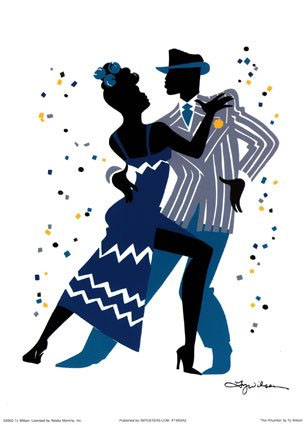|
CARIBBEAN MUSIC & DANCE |
| Home | PUERTO RICO | CUBA | DOMINICAN REPUBLIC |
|
Rumba, contrary to Spanish-influenced Bolero, has a stronger basis on African culture. Traces from distinct African ethnic groups can be found due to their preserved traditions within Cuba.33 It originates from African slaves gatherings in the provinces of Havana and Matanzas during the late 1860s. Much of the Spanish influence is found in the song aspect; Spanish lyrics were added to a structured song.34 The vocal section has a solo song part accompanied just by instruments and a call-and-response section, in which the lead singer is followed by a chorus. The content of the songs expresses various feelings. Although the song has some structure, rumba is mostly characterized by improvisions. The main instruments are drums (conga, tumba, and quinto) and sticks (claves and palitos). Cájones, which are wooden boxes, were used when drums were prohibited by law between 1913 and the late 1930s.35 It has three dominant types of rumba, mainly distinct in dance. This is mostly influenced by Afro-Cuban origins, emphasizing the isolation of body parts. The columbia is a series of male solo dance, most similar to its African origins. It is fast with acrobatic moves that emphasize the competitiveness of men. The yambú and guaguancó, on the other hand, are couple dances. The yambú is flirtation in which both women and men actively take part whereas the guaguancó is seduction. The male chases the female with gestures including the vacunao, resembling a pelvic thrust.36 Though rumba has suggestive moves, physical contact is limited in rumba with the use of a cloth that is thrown about. This again is from African dances. For this reason rumba was associated with an “inferior” sector of society by white upper-class Cubans.37 Rumba was primarily performed in street corners and patios of urban areas but later found its way into theaters. It was incorporated by the government after the Revolution and is the only dance performed throughout the year and during national holidays. However, rumba was once prohibited because it was viewed as dangerous and too sexually charged. Though rumba in the U.S. uses traditional rumba rhythms, it does not resemble the original Cuban dance. It was first introduced to the U.S. in 1914 but did not become popular until it took a less suggestive version in 1931, combined with dazón and son. This version was used in ballroom dances and later spread further to Europe. Partners danced slightly apart compared to other ballroom dances. It also became a model for the mambo and the chacha. Unlike the original Cuban rumba in which more attention was focused on the male, it is often referred to as a "woman's dance" in the U.S. because it accentuates the women's body line.38 Other than ballroom, rumba, combined with jazz elements, took another form in the 1930s. It was almost twice as fast and was called Big Band Rumba.
|
|
|
